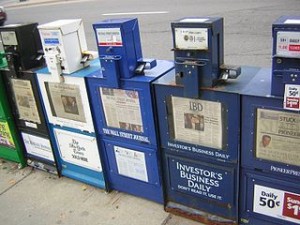
Back when The Atlantic had a lot more poetry in it! (The Atlantic Monthly/Wikimedia Commons)
On Monday freelancer Nate Thayer created a buzz when he made it known that The Atlantic had asked to republish his work without offering to pay him for it. Two days later, Alexis Madrigal, one of the magazine’s senior editors, offers a very long, very personal reply that also turns out to be a meditation on the state of the industry.
Madrigal opens with harrowing details about the depths of his early freelance days, where he was paid $12 for pieces and had to go to the ATM drunk to handle his credit card balance. But he also gives the publications’ side of the freelance story. According to him, it’s not the big publications’ fault that they can’t pay freelancers as much as they’d like to (ostensibly). The economic model for online publications has become equally pressurized.
Madrigal, a digital editor, says they have six options:
- Write a lot of original pieces.
- Take partner content.
- Find people who are willing to write for a small amount of money.
- Find people who are willing to write for no money.
- Aggregate like a mug.
- Rewrite press releases so they look like original content.
Madrigal says he sympathizes most with No. 1 and No. 5, but that digital journalism mores must be taken case by case, as everyone (except the high rollers) is making compromises to keep afloat. His parting shot offers little in the way of consolation:
“Anyway, the biz ain’t what it used to be, but then again, for most people, it never really was. And, to you Mr. Thayer, all I can say is I wish I had a better answer.”









